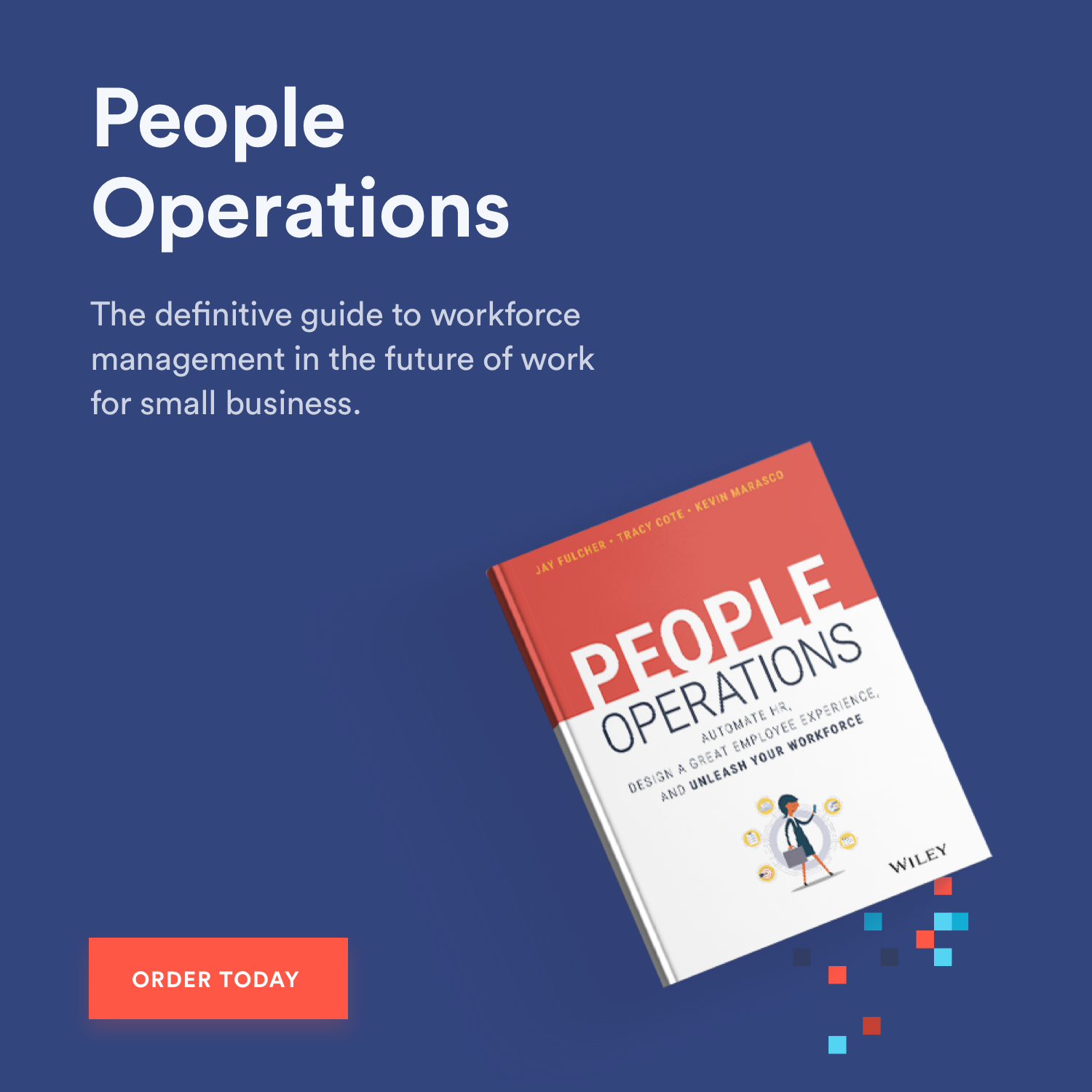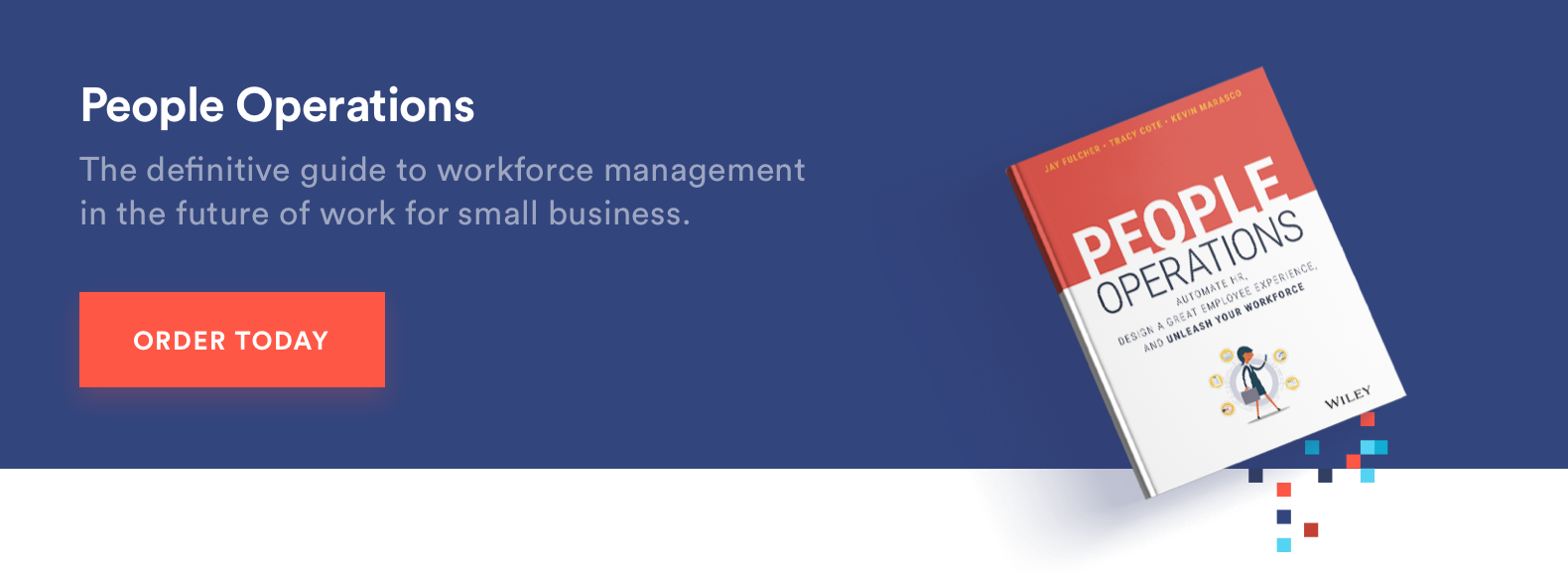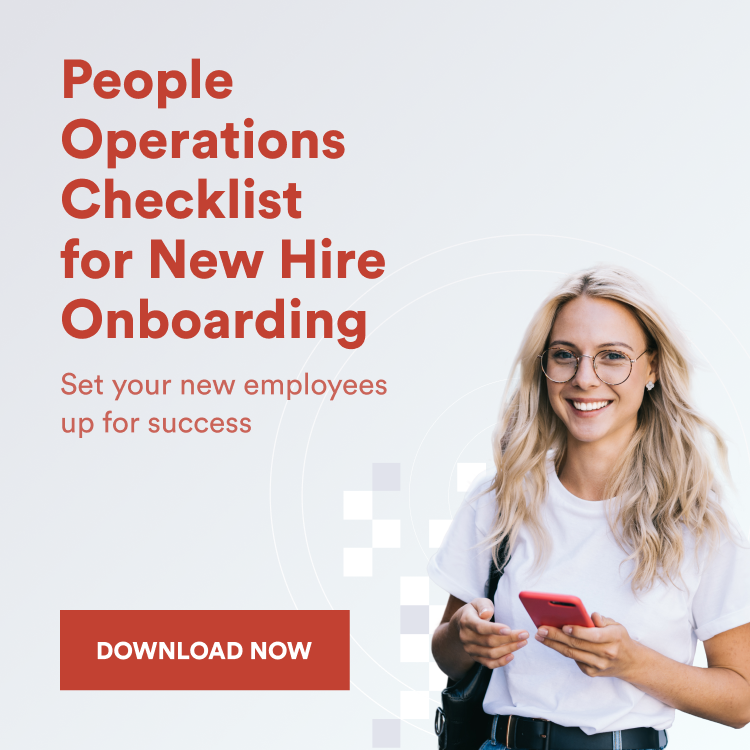Approaching traditional new hire activities from a People Ops perspective can have a big impact on employee retention and satisfaction.

Here's what you need to know:
-
Companies are increasingly moving to a People Ops perspective to manage HR task, including onboarding
-
Successful People Ops initiatives require creative and strategic thinking about employee well being and engagement
-
Automating routine HR tasks allows People Ops teams to dedicate more time and resources to creating successful HR programs
“We really try to find ways to say yes,” said Laszlo Block, former Senior Vice President of People Operations at Google when asked about what makes People Operations different from Human Resources in a 2015 interview.
Credited with popularizing the term and philosophy of People Ops, Block coined the term when he rebranded Google’s HR function in 2006 to reflect the company’s people-first employment ideology.
Nearly 15 years later, small businesses everywhere are making the switch to this more modern-day incarnation of HR. As you do so at your business, here’s how and why you should be rethinking onboarding.
People Ops: a quick primer
Rather than focusing on the resources involved in employee management, People Ops is about putting employees first to cultivate a workforce of empowered, supported-decision makers.
“Human Resources is traditionally viewed as solely process-oriented without acknowledgement of the holistic employee,” said Eric Mochanacz, senior HR consultant at HR consulting firm Red Clover. “People Operations is focused on creating processes that increase employee engagement. It’s about developing a workplace where employees want to work.”
Chief People Officers will be quick to tell you their days aren’t all that different than that of a Chief Human Resource Officer; rather, it’s the fundamental mindset shift of the organization that differentiates the two.
“Businesses have to recognize the difference — or the different perceptions — [between the two] and shift their processes to focus on a holistic, People Operations approach,” Mochanacz said.
Rethinking onboarding
People Ops teams instead treat onboarding as an interconnected experience that provides both the employee and employer the tools and knowledge to work successfully for the long term.
Reimagining onboarding from a People Ops perspective means taking a comprehensive view, not simply looking at onboarding as a set of tasks or activities that must be completed. People Ops teams instead treat onboarding as an interconnected experience that provides both the employee and employer the tools and knowledge to work successfully for the long term.
“Onboarding used to be a period where employers would inform employees on how it is,” Tom Yogev, executive coach on leadership and development and CEO of the Big Joy Theory, said. “Now the shift is such that it is an opportunity for employees to inform employers on how to best engage with them for maximum value for all parties.”
Yogev points out that informing new hires of how you do things at your company is logic that’s based on potentially flawed thinking. “Orienting the employee to what already exists assumes multiple things, most notably that what already exists is ideal (which we know it never is) and that the employee has nothing to contribute toward the improvement of the processes and the organization itself,” Yogev added.
Onboarding is a high-impact place to succeed
Some think onboarding is a new hire’s first interaction with a company, but that’s not true. The employee has already had weeks — even months — of interaction with recruiters, but onboarding is when you formalize the relationship between the new team member and the rest of the company. While it’s not your companies’ first impression, it’s a vital one; research by Brandon Hall Group and Glassdoor found companies with strong onboarding programs improve their retention rate by 82%.
With employers recognizing the true cost of turnover — research puts the cost of replacing an employee at 90-200% of their salary — more organizations are rethinking onboarding from a People Ops perspective to improve retention rates.
3 truisms
Moreover, as People Ops is about the holistic care of employees and their well being, onboarding shines an an opportunity to begin illustrating 3 truisms to the new hire:
- You’re organized — The employee’s email address is ready; they can access company networks; they know who they’re supposed to be meeting with and talking to. There are no surprises!
- You’re a great place to work. This goes beyond welcome lunches and free snacks. Don’t use superficial “perks” that won’t measurably contribute to building an engaged and contented workforce. Instead, focus on building a healthy company culture built on psychological safety and openness.
- You’re committed to their growth, development, and success. Show you’re invested in your new hire by following Block’s advice at the top of the article. Look for ways to say yes; financing development courses, cross-training across functions, and working hard to understand career goals are examples.
Yet in order for People Ops employees to focus on numbers 2 and 3, teams need time to think creatively and plan more strategically. This means using the right Human Resources Information System (HRIS) to automate operational tasks associated with onboarding. That way, People Ops can focus on the more impactful strategies that help build great workplaces committed to:
- Employee well-being
- Growth
- Development
Automation fuels People Ops
Traditional onboarding has many manual tasks that are easily automated. With the right HRIS, your People Ops teams will be able to:
- Easily create and extend offer letters and team announcements
- Share org charts and company directions
- Access compliance checklists for hiring, paperwork, and benefits information
- Integrate employee info and access with partner apps
- Cut the time onboarding new employees by 50%
Automate these necessary but straightforward tasks to free up mindshare and resources for People Ops Pros. Focus on creating a better employee experience and to help your organization shine as a great place to work.









